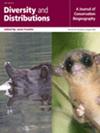Spatial Modelling Approaches for Estimating Richness of Benthic Invertebrates Throughout New Zealand Waters
Abstract
Aim
Understanding the distribution of marine biodiversity is critical for evidence-based identification of areas for protection and restoration. Taxonomic richness is a key, intuitive component of biodiversity and is often used to guide marine spatial planning and protection. In this study, we explore the relative merits of two spatial modelling approaches, stacked species distribution models (S-SDMs) and macro-ecological models (MEMs), for mapping the richness of benthic invertebrate taxa.
Location
New Zealand Exclusive Economic Zone.
Methods
Two hundred and seven individual layers from SDMs of benthic invertebrate genera were pooled from an existing database and stacked to create a single genera richness layer. The same occurrence data used to develop the SDMs, comprising over 120k occurrences, was used to fit MEMs using an ensemble modelling approach.
Results
The S-SDM layer performed poorly when validated against a database of observed genera richness, while the MEM approach performed well. While there were some consistencies in the areas predicted as high richness, substantial differences between the methods were also apparent, with the MEM seemingly better able to discern nuanced, fine-scale patterns in richness. Areas of high richness predicted by the MEM include parts of the Chatham Rise, a large component of the sub-Antarctic region, continental-shelf and coastal habitat in the south of the South Island, the north-east coast of the North Island, around East Cape and the Kermadec, Lau-Colville and Macquarie Ridges.
Main Conclusions
Spatial and catchability biases in the underlying occurrence data may contribute to the poor performance of the S-SDM and suggest the approach may not be appropriate when using occurrence datasets with limited systematic sampling. The predictions from the MEM provide the best available information for the distribution of benthic invertebrate richness for New Zealand waters and thus offer important information for current and future marine spatial planning processes.


 求助内容:
求助内容: 应助结果提醒方式:
应助结果提醒方式:


